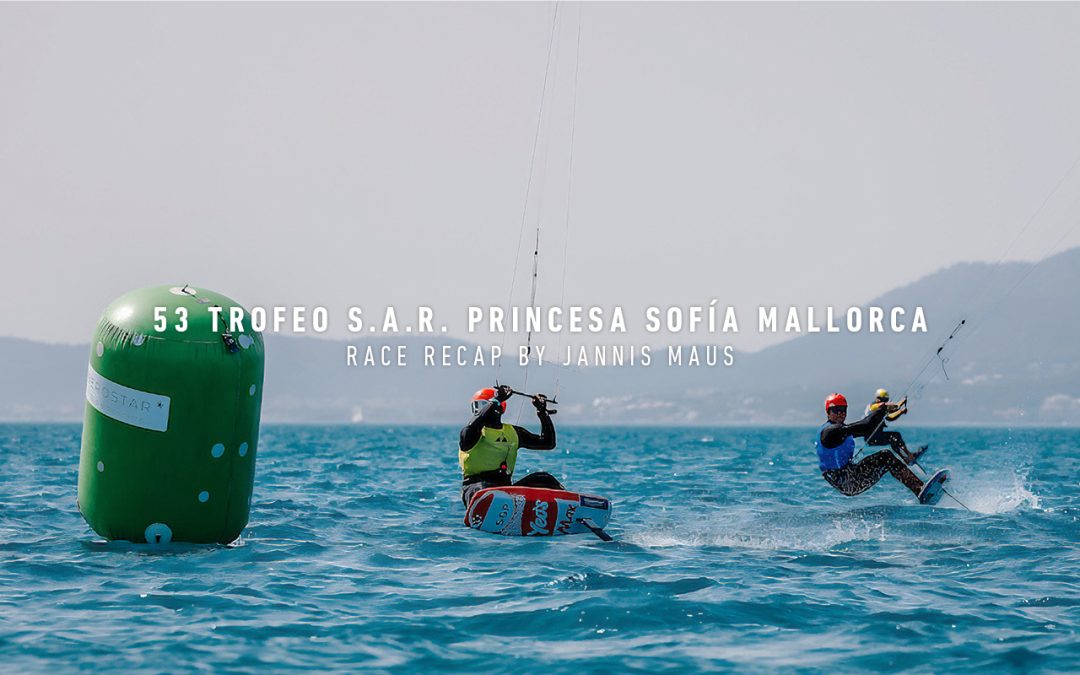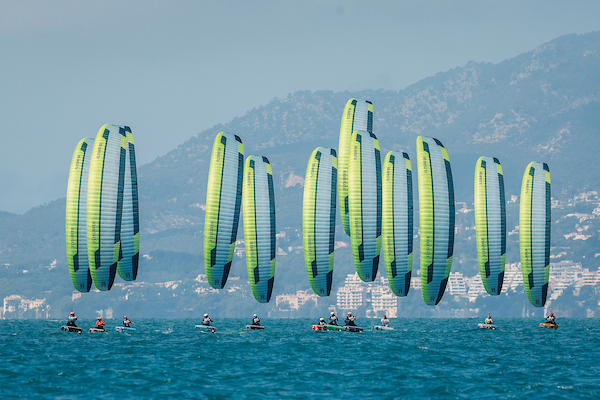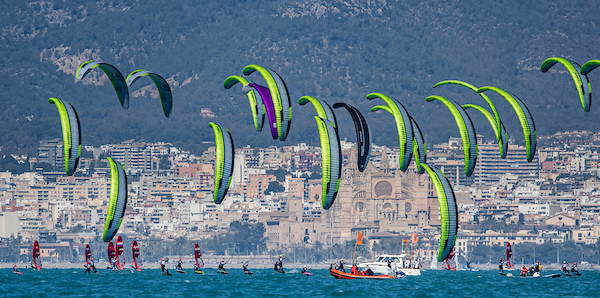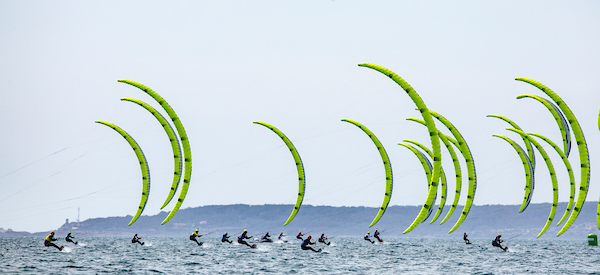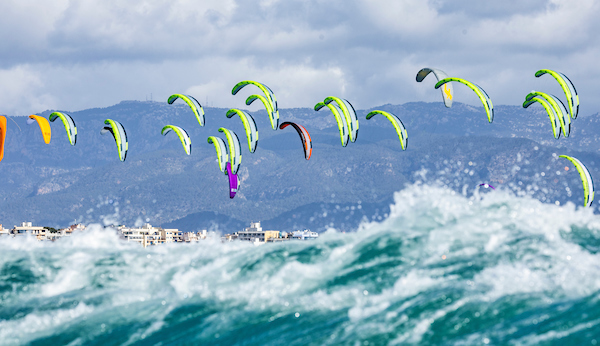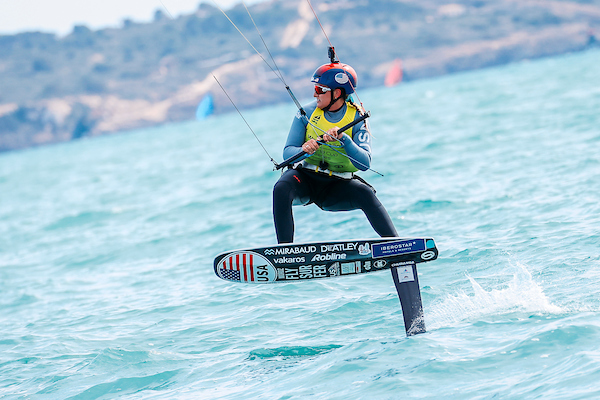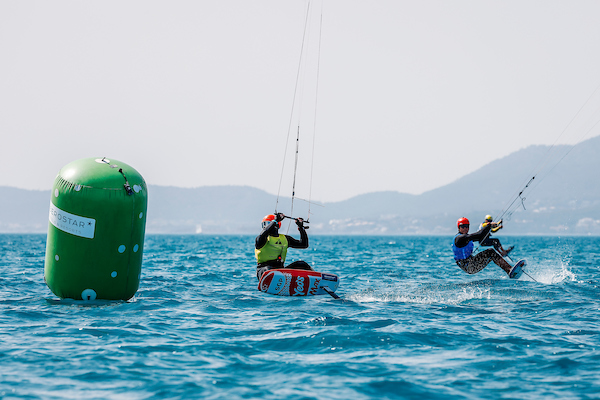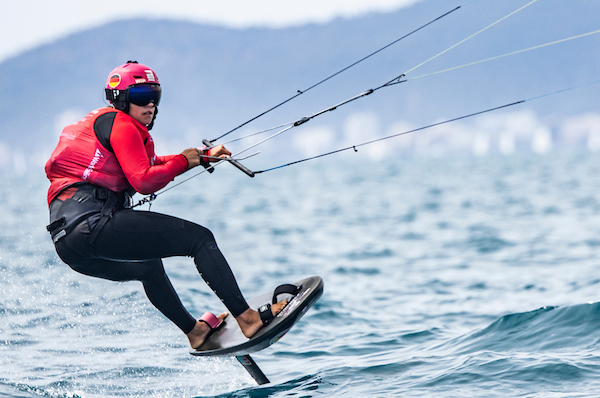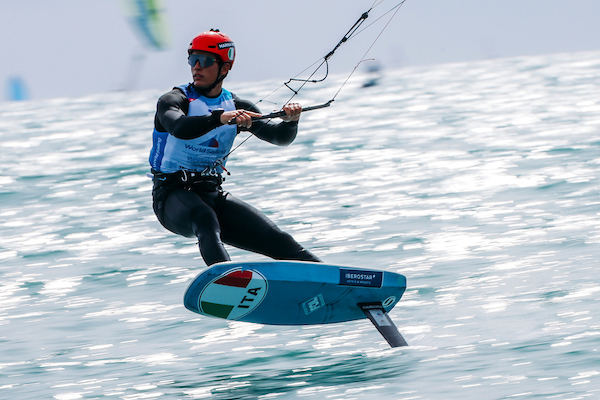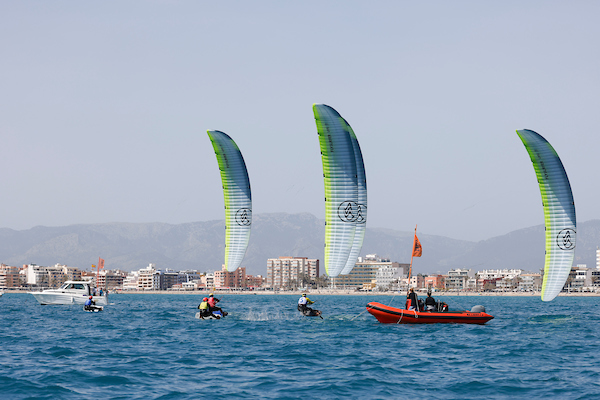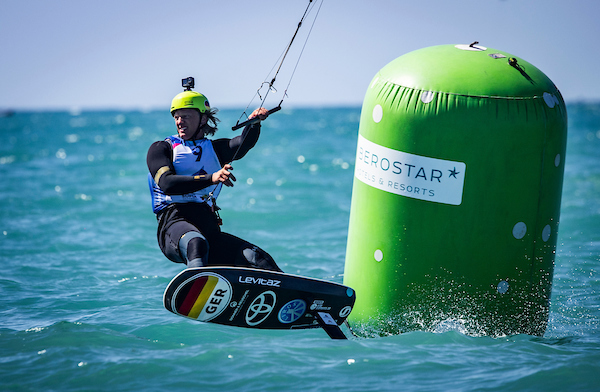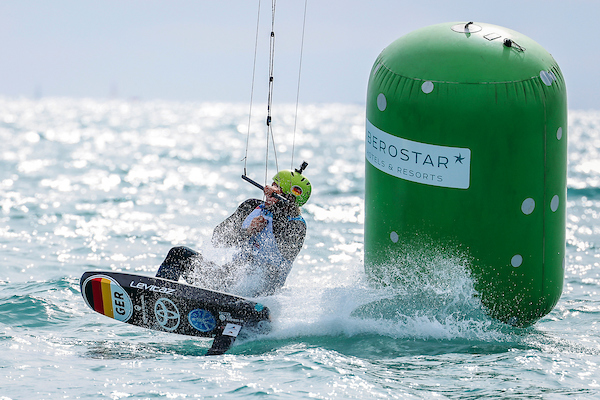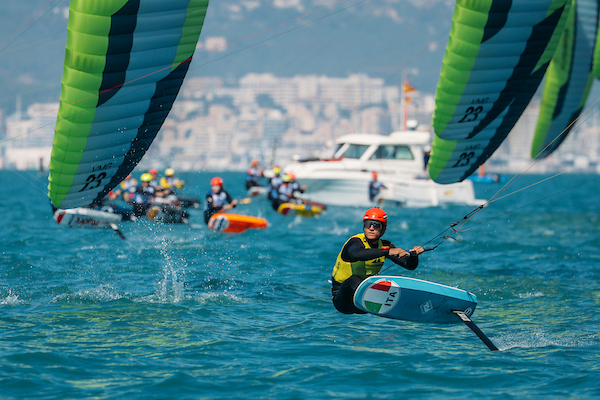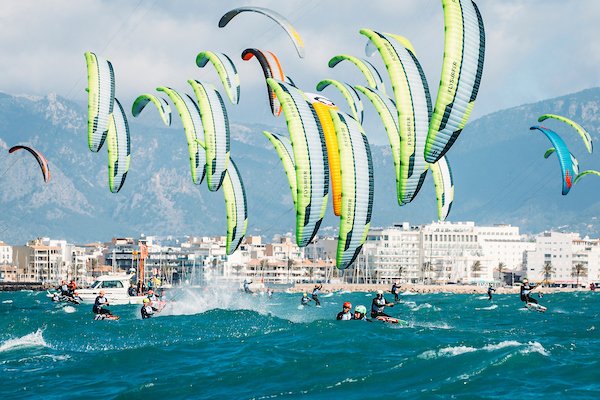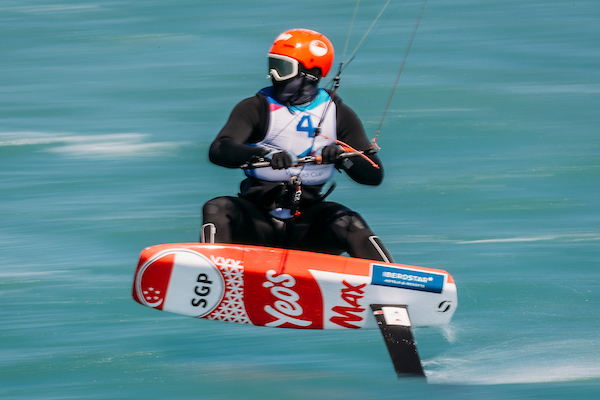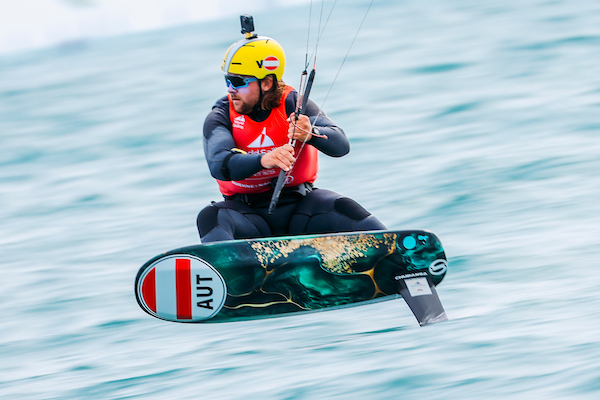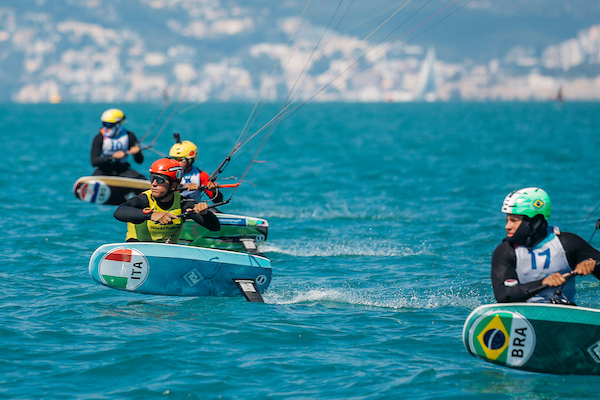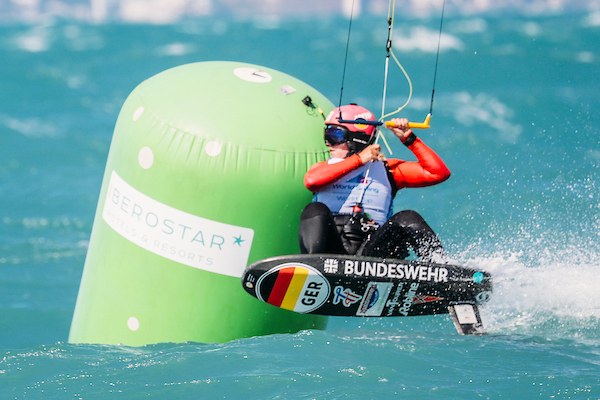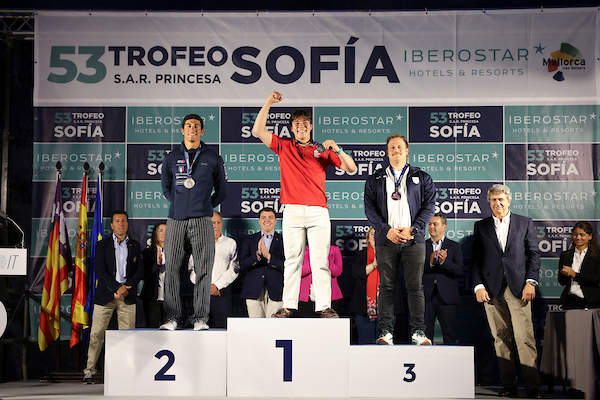Let’s start into a new week full of emotion – the race is on!
New week, new luck! That’s what many starters of the Princess Sofia Trophy (PST) might have thought, especially after fighting for the European Championship in Mar Menor just eight days earlier. No one expected the first day to bring the most challenging and windiest conditions of the last four years.
With 59 men and 34 women, the starting field was at the highest level as usual. However, top-seeded sailors like Connor Bainbridge (GBR) or Lauriane Nolot (FRA) were absent due to the short recovery time between the European Championship and the World Cup. The men’s competition was particularly exciting, with former World Champion Toni Vodisek (SLO) returning to racing after extensive winter training in Australia.
The weather forecast for the first day of competition also increased the excitement enormously. While usually, it’s the lack of wind that thwarts athletes’ expectations, the riders woke up and got almost too stormy and wavy conditions on the first race day. Although races in most other sailing disciplines were abandoned for safety reasons, all kiters heard the “AP-Down” signal around noon, the 20-minute pre-warning for the day’s first race. All participants fought through 25 knots of wind and extremely steep waves over two meters to reach the starting line. It was a tough race!
“It was as extreme as I have ever experienced in any competition!” said Jannis Maus (GER). “Not only the wind strength but also the chaotic waves and strong gusts made it almost impossible to go full speed.”
After three races for the two qualifying fleets of men and two races for the women, the race management had to send the riders back to shore. Wind gusts of up to 35 knots made a safe regatta impossible, leaving the strong wind specialists Daniela Moroz (USA) and Bruno Lobo (BRA) at the top of the ladder.
After such a hectic, physically and mentally demanding day, the bay of Palma showed its most beautiful side in the following days. With a light onshore breeze of 10 to 15 knots, the following races took place under glamorous conditions.Now, Maximilian Maeder (SGP) once again demonstrated his class! He won four of five races and secured first place, closely followed by Riccardo Pianosi (ITA).
After the first three days, the athletes were split into gold and silver fleets, so Pianosi dominated his fleet and won four races, finishing the day only just behind Maeder due to a crash in the second race. In the women’s category, in which 34 starters competed as a “full fleet” from the beginning, Breiana Whitehead (AUS), Daniela Moroz (USA), and Leonie Meyer (GER) shared the race victories among themselves.
On the last day of the qualifying series, light wind conditions still favor big kites. Once again, Maeder and Pianosi competed for the leader’s yellow jersey. And indeed, at the end of the day, the Italian managed to take the lead from last year’s PST winner. After 12 women’s races, it became clear that Moroz’s strategy of using the past European Championships more as training and test event was paying off. The American found more speed and continued dominating the women’s fleet until the final day.
Vodisek, who had achieved solid results in the first three qualifying days but had missed out on placing himself at the top of the ranking until the first Goldfleet day, now had to show that he still belonged among the fastest sailors. With two wins in the first two races, he caught up with the two leaders and reduced the points gap.
But with many available starting tactics, the rest of the fleet kept the leaders on their toes. A difficult-to-assess sea breeze sometimes favored the right, and sometimes the left side of the course; such tactical variations like port starts (starts without right of way) were on the agenda. Even the second finals day gave a new challenge to the regatta with morning fog and a strong southeast gradient. A left shift on the left side of the course, coupled with different wind speeds, made it incredibly difficult to find the fastest and shortest line to the windward mark, but even under these conditions, Maeder and Moroz managed to stay ahead.
The following medal race day meant maximum stress for all top 10 riders. After fighting for their positions in 18 previous races, it was about defending those positions and improving them in races lasting just 6 minutes. A mental game of what-if scenarios spun around until the first starting signal sounded. And this time, it was a real test of patience for all athletes because the wind refused to pick up. When finally fair competition conditions were present at the lowest wind limit of just 6 knots on the entire medal race course, it was already too late to start both the semifinals and final races, and the race management decided to let only the top four male and female riders start against each other in one final each.
In the men’s final, Maeder (SGP), Pianosi (ITA), Vodisek (SLO), and Denis Taradin (CYP) would battle for the podium. With a two-point lead, Maximilian Maeder only needed a single-race win to secure the competition. In a start unusual for “normal” races, all four finalists positioned themselves on port, requiring only a single tack to reach the crucial first windward mark. Maeder executed this tack perfectly, leaving the other riders just behind him after the first upwind leg. Through skillful match racing, the 17-year-old Singaporean maintained his lead until the finish line, securing another trophy on his way to the first Olympic Games in kiteboarding. The podium here is completed by Riccardo Pianosi in 2nd place and Denis Taradin in 3rd place.
The women made their final a little more exciting. With Whitehead (AUS), Moroz (USA), Meyer (GER), and Pescetto (ITA), representing three continents. Moroz started the final races with two match points and Whitehead with one point. Moroz’s slight lead over Whitehead was nullified by the Australian’s dominant first match-race win, so the day’s last race would break the tie. And in this last race, there would be some confusion because, unfortunately, the American made a costly mistake. With an early start, she disqualified herself from the race and thus from the overall victory, leaving Breiana Whitehead needing to finish the race to secure her gold medal.
“I didn’t even know I had won until my coach told me on the water!” Whitehead said euphorically in the interview shortly after.
Moreover, Whitehead was surprised again later that day when it became apparent during the award ceremony that she was not only the best kite racer of the World Cup but also the winner with the fewest overall points among all ten sailing classes that started in Palma – engraving her name on the prestigious Princess Sophia Trophy alongside last year’s winner Maximilian Maeder. In the kite ranking, silver goes to Daniela Moroz, and bronze to Leonie Meyer.
In just a few weeks, the critical Olympic Week in Hyeres is coming up, where the last five available Olympic spots will be awarded, and surely exciting races await all women and men.
![]() written by Jannis Maus
written by Jannis Maus![]() photos by Sailing Energy / Princesa Sofía Mallorca
photos by Sailing Energy / Princesa Sofía Mallorca

